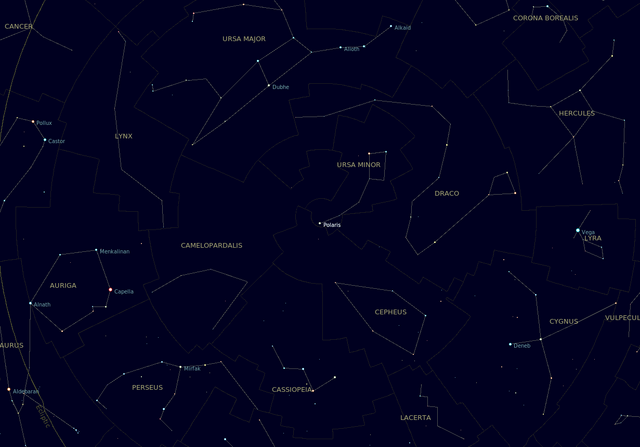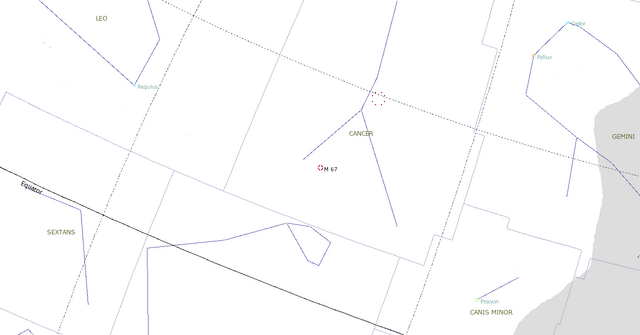Limiting Magnitude
Contents |
Limiting Magnitude and City Skies
Of course the problem with observing from within a city is that the sky itself has a visual magnitude. This limits what can be observed, though with larger instruments, you can see fainter objects. For example, from my light polluted back yard within the city of Calgary (or as we like to call it, light pollution central), my unaided eye, on a good night can see down to 4th magnitude which is much brighter than the 6th to 7th magnitude that I could see at a good dark site. At this magnitude, most constellations are missing stars and other than the moon and planets, there's not a heck of a lot to look at. Even so the Pleiades and the Hyades, for example, are visible in the winter time, albeit missing stars.
If I move up to my 10x50 binoculars, my limiting magnitude moves to around 7. This of course brings many more items into visibility, at least in theory. There are at least 50 deep sky objects that would fit into this category, that are visible from Calgary's, and hence Canada's, latitude. Now this is a theoretical 50, as for many objects, the actual surface brightness will be less than what the magnitude suggests. This is because for extended objects, i.e. non-stars, the magnitude is the aggregate of the total brightness of the object. The more spread out an object is, the dimmer it actually appears for a given magnitude. So two objects can have the same magnitude, but if one is spread out more, it would appear dimmer. This is one reason why this list won't be simply generated from a planetarium program as the magnitudes listed won't necessarily translate into observability at a given limiting magnitude.
I will also include objects visible with a small telescope. My 127mm (5 inch) Maksutov has a theoretical limiting magnitude of about 13. However due to light pollution within the city this becomes something around 9 to 10. Again with surface brightness differing from magnitude, it's unlikely there will be many 9th mangitude galaxies on the list, but what I can see through my scope will be.
Determining Limiting Magnitude
First determine if you're using your unaided eye, binoculars or telescope. You will then need to download the appropriate map from here. If you have a postscript printer, download the .ps postscript files as they will print cleaner than the .pdf files.
Once you have your file(s), on a dark moonless night go out into your back yard with a printout of the appropriate map and locate the appropriate object – Ursa Minor (Little Dipper) for the unaided eye, the "bowl" of Ursa minor for binoculars or M67 for a telescope.
Look at the object and circle the stars you see in the sky on the map. Use a red filtered flashlight if you need it to see the map. Once you've circled the stars you can see you can go indoors and work out your limiting magnitude.
Many of the stars on the map have numbers beside them. These numbers are the magnitudes of the stars they are beside, without decimal points. The decimal points have been omitted so they don't confuse you by looking like stars. This means that a star that is magnitude 5.3 is marked as 53, 10.2 as 102 and so on. Just assume there's a decimal point before the last digit.
Find the three stars you saw with the largest numbers. These will be the dimmest ones you saw. The average of these three stars will give you a good idea what your limiting magnitude will be.
Maps
Limiting Magnitude Maps
The limiting magnitude maps are .pdf and .ps files. They are held in the file repository on my blog. The links below provide access to the files:
| File | File Type | Contents |
|---|---|---|
| umivis.pdf | Naked eye map in PDF format | |
| umvis.ps | PS | Naked eye map in postscript format |
| umibino.pdf | Binocular map in PDF format | |
| umibino.ps | PS | Binocular map in postscript format |
| M67lim.pdf | Telescope map in PDF format | |
| M67lim.ps | PS | Telescope map in postscript format |
Locator Maps
Here are locator maps for Ursa Minor and M67
Ursa Minor
M67

